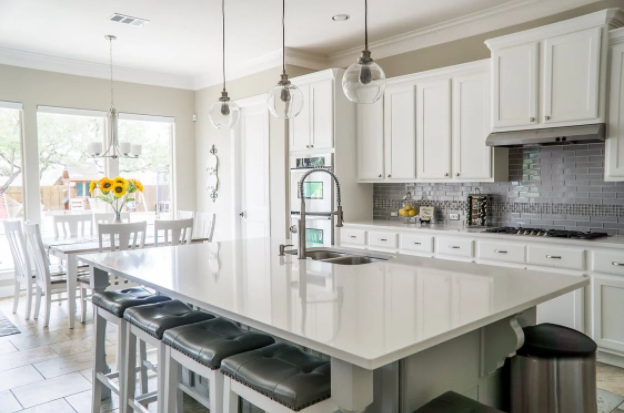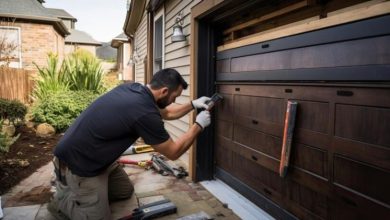Tips for getting your kitchen ready

After weeks of staring at design blogs and leafing through magazines, you’ve finally come up with the perfect plan for your kitchen remodel. The layout is ideal, and you’ve fallen in love with the style of cabinets and appliances you’ve chosen. Now it’s time to start making your dream kitchen a reality. To avoid costly mistakes, it’s important to take things one step at a time and to carefully plan each stage of the remodel. Begin by creating a detailed budget that accounts for all the expenses associated with the project. Then, give yourself plenty of time to shop around for the best deals on materials and labor. Once you’ve secured all the supplies you need, it’s time to start gutting the old kitchen. This may seem like a daunting task, but if you take it one step at a time, it will be a lot easier. Be sure to label all the wires and pipes before you start demolition, and make sure to dispose of all the debris properly. Once the kitchen is gutted, it’s time to start installing the new cabinets, appliances, and countertops. If you’re not sure how to do it yourself, be sure to hire a contractor who can help you with the installation.
Now that you have a plan for your kitchen, it’s time to start getting it ready! Here are some tips:
1. Start by decluttering the space. Remove anything that is not needed or is in the way.
The kitchen is the heart of the home, and it should be a space that is both welcoming and functional. However, all too often, kitchens become cluttered and cramped, making it difficult to find what you need when you need it. If your kitchen is in need of a makeover, the first step is to declutter the space. Remove any items that are no longer needed or used, as well as anything that is taking up valuable counter or cabinet space. Once you have decluttered the kitchen, you can then begin to think about ways to optimize the space. For example, consider installing shelves or storage racks to help keep pots, pans, and other cooking essentials within easy reach. With a little bit of effort, you can transform your cluttered kitchen into a space that is both functional and stylish.
2. Next, paint or resurface the cabinets and walls as needed. This can make a big difference in the overall look of the kitchen.
When you walk into a kitchen, the first things you notice are the cabinets and walls. If they’re old and outdated, it can make the whole room look tired and in need of a facelift. Luckily, painting or resurfacing them is a relatively easy and inexpensive way to give your kitchen a fresh new look. Start by sanding down the surfaces to create a smooth base for the new paint or resurface material. If you’re painting the cabinets, choose a color that complements the rest of the kitchen. For example, if your countertops are white, you might want to go with a light grey or blue for a beachy vibe. If you’re opting for resurfacing instead of painting, there are plenty of fun materials to choose from, like marble or granite tiles
3. Install new countertops and appliances to give the kitchen a fresh look.
The kitchen is one of the most important rooms in the house, and its appearance can have a big impact on the overall feel of the home. If your kitchen is looking outdated or tired, a few simple changes can make a big difference. Installing new countertops and appliances can give the room a fresh, updated look. And if you’re really looking to make a statement, consider adding a backsplash or new cabinet hardware. With just a few changes, you can Transform your kitchen from drab to fab in no time. Who knows, you might even find yourself spending more time there! You can also look for a classy refurbished fridge online to get what you want in a budget.

4. Finally, make sure to organize everything so that it is easy to use. Label cabinets and drawers, and create a system for storing pots, pans, and utensils.
One of the most important things to keep in mind when organizing your kitchen is that everything should have a place. This may seem like a no-brainer, but it’s amazing how many people try to cram everything into cabinets and drawers without taking the time to create a logical storage system. One way to do this is to label cabinet doors and drawers with descriptions of what goes inside. For example, you might label the top drawer ” silverware” and the cabinet next to the stove “pots and pans.” By taking a few minutes to label everything, you’ll save yourself a lot of time and frustration down the road.
Another thing to keep in mind is that not all kitchen items are used on a daily basis. Some items, like pots and pans, can be stored in a cabinet or drawer until they’re needed. Other items, like plates and glasses, can be stored on shelves in the pantry or on the countertop. This will help free up cabinet and drawer space for things that are used more often.
When organizing your kitchen, it’s also important to think about how you use the space. If you have a small kitchen, try to use the vertical space by installing shelves or wall cabinets. If you have a lot of countertop space, you can use that for storage containers and appliances that are used less frequently.
By following these tips, you can create a kitchen that is both functional and organized.




